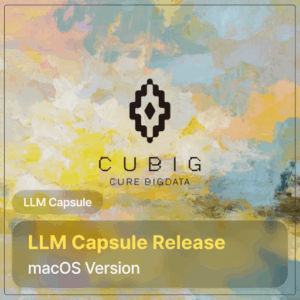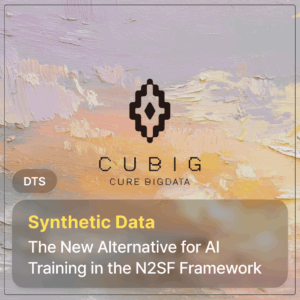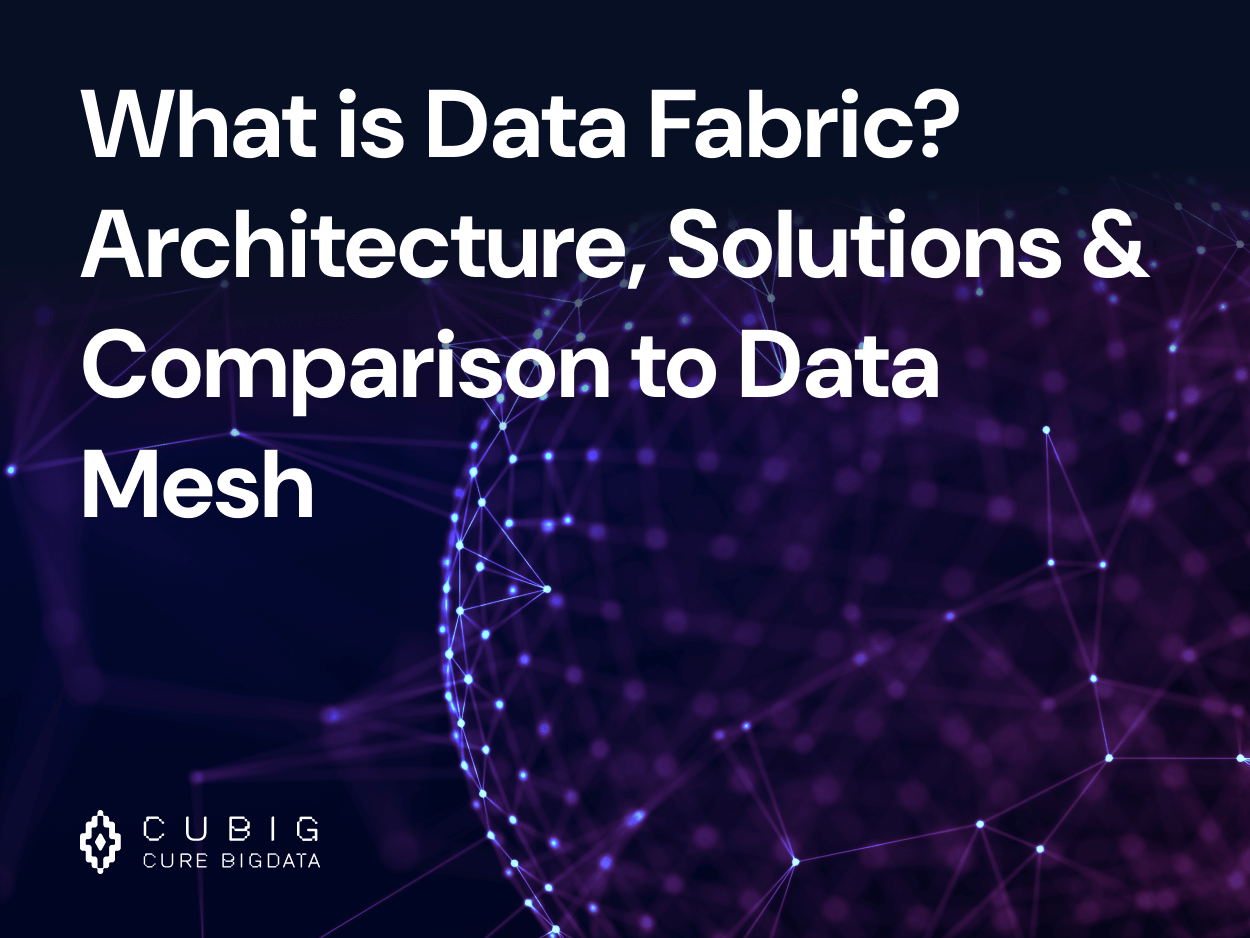What is Data Fabric? Architecture, Solutions & Comparison to Data Mesh
Table of Contents
What is Data Fabric?
Definition and Origin of the Term
Data fabric is a modern architecture for managing data. It offers a unified and intelligent way to access, integrate, and manage data across many environments. This includes on-premises systems, hybrid setups, and multi-cloud platforms. With data fabric, organizations can enable real-time access, apply governance, and automate data flows—all within a single framework.
The term “data fabric” became popular around the mid-2010s, especially through research firms like Gartner. As data systems grew more complex and fragmented, older methods like ETL and data lakes became harder to manage. Data fabric emerged as a smarter solution. It uses metadata, AI/ML automation, and policy-based rules to support secure and seamless data operations.
Unlike traditional systems, data fabric is flexible. It does not need to move all data to one location. Instead, it connects distributed data sources in place. This allows dynamic, on-demand access to data based on real business needs.
Core Components of a Data Fabric System
Data fabric architecture includes several core components. These parts work together to enable smart, seamless, and secure data integration across different environments.

1. Metadata Management
Metadata is the backbone of a data fabric. It stores key details about data sources, formats, usage, and relationships. This creates a map of available data across systems.
With this map, teams can easily find, understand, and use the right datasets. Without a strong metadata layer, it becomes hard to automate discovery or maintain control over data.
2. Data Cataloging
A data catalog organizes both structured and unstructured data. It works closely with metadata tools.
Like a library, it lets users search and browse datasets easily. This reduces duplication, improves teamwork, and speeds up analysis. Many modern catalogs also include data lineage and usage tracking.
3. Intelligent Data Discovery
AI and machine learning help detect useful data automatically. These tools analyze user roles, queries, and behavior to surface the best datasets.
Instead of searching manually, users get smart recommendations. Azoo AI uses this feature to match datasets to each model’s training or business goal.
4. Unified Access Across Distributed Environments
Data fabric does not require all data to be in one place. Instead, it connects data across clouds, on-prem systems, and edge devices using a virtual layer.
This reduces the need for duplication, supports compliance, and allows real-time use of distributed data—without moving it.
5. Policy-Based Data Governance
Governance is built into the fabric by design. Policy engines manage access rules, encryption, and masking based on who is using the data and why.
This ensures compliance with laws like GDPR and builds trust. It also lowers the risk of leaks or improper use.
Data Fabric vs Traditional Data Integration
Traditional methods like ETL pipelines and data warehouses were not built for today’s fast, AI-driven world.
They work, but they are slow and rigid. Data fabric offers a smarter and more flexible way to manage data.
Why ETL and Warehouses Fall Short in Modern AI/ML Workflows
ETL stands for Extract, Transform, Load. It moves data into large, central systems. Data warehouses store that data.
But these systems are often slow, hard to update, and require manual work.
AI and ML need quick access to data—sometimes in real time. But ETL often runs at night in batches. This causes delays and stale data.
Also, in many companies, data is stored in different places. It might be in the cloud, on local servers, or in outside systems. ETL struggles to bring all this together.
Data warehouses are great for reports and dashboards. But AI needs more. It needs ongoing training and access to different types of data. Rigid systems don’t support that well.
Data Fabric’s Real-Time, Policy-Driven Strengths
Data fabric solves these problems. It gives real-time access to data without needing to move it.
It uses a virtual layer to connect live data from many places.
This setup also enforces rules and policies. It uses metadata and AI to help with search, transformation, and compliance.
You get the data you need, when you need it—without copying or moving it.
Azoo AI uses this for synthetic data. It accesses many types of data automatically and follows privacy rules at every step.
This leads to faster results, better accuracy, and more trust in the system.
In short, data fabric is not just another tool. It’s a smarter, more adaptive system made for today’s AI and ML needs.
Data Fabric vs Data Mesh
Both data fabric and data mesh aim to solve modern data challenges.
But they take different approaches.
- Data fabric is centralized and driven by technology.
- Data mesh is decentralized and focuses on teams and ownership.
Conceptual Differences Between Centralized (Fabric) and Decentralized (Mesh) Models
| Aspect | Data Fabric | Data Mesh |
| Control Model | Centralized control and orchestration | Decentralized domain-level ownership |
| Focus | Technology-centric automation | People and process-centric distribution |
| Governance | Policy-based, top-down governance | Federated governance across domains |
| Data Delivery | On-demand via virtualization | As products managed by each domain |
| User Roles | Engineers & IT-driven | Domain experts & product owners |
Technical Architecture Comparison
Data Fabric
- Connects data using metadata, APIs, and virtualization
- Depends on AI/ML for discovery, quality checks, and policy enforcement
- Has a central layer that gives access without moving data
Data Mesh
- Uses less central technology, more team-level responsibility
- Builds distributed data nodes, each owned by a domain team
- Promotes self-serve platforms and “data as a product” thinking
Organizational Impact: When Centralized Control is a Strength vs. When Domain Ownership is Key
| Situation | Best Fit | Why |
| Regulated industries (e.g. finance, healthcare) | Data Fabric | Ensures compliance and unified control |
| Cross-departmental reporting | Data Fabric | Central access and governance are ideal |
| Product-driven business units | Data Mesh | Domains control their data pipelines |
| Rapid innovation needed in isolated teams | Data Mesh | Encourages autonomy and faster iteration |
When to Use Data Fabric vs. Data Mesh
Hybrid Models
You don’t always need to pick one model. Many companies use both:
- Data mesh gives teams control over their data products
- Data fabric manages shared pipelines and enterprise-wide rules
Synthetic Data Development Pipelines
Data fabric is often better for synthetic data pipelines. Here’s why:
- It supports repeatable workflows across different systems
- It gives secure, real-time access to real or anonymized data
- It applies privacy and compliance policies automatically
Data Ownership Across Teams
If your company has many teams or global units, try combining both:
- Use data fabric to enforce rules and make data searchable
- Use data mesh to let local teams work with flexibility
Data Fabric Architecture

Typical Layers in a Data Fabric Architecture
A data fabric is built from four key layers. Together, they unify access, control, and intelligence across systems:
- Data Ingestion Layer: Connects to databases, APIs, and files. It collects raw data from various sources.
- Data Enrichment Layer: Cleans and transforms data. It also removes duplicates and adds missing values.
- Metadata Intelligence Layer: Captures and analyzes metadata. This supports semantic search and AI reasoning.
- Data Access & Governance Layer: Provides secure access. It enforces policies and adds observability.
These layers support a data system that is smart, flexible, and policy-driven.
Key Technologies Enabling Fabric: Metadata Engines, APIs, Virtualization, etc.
Many tools power data fabric. These technologies help it adapt and automate:
- Knowledge Graphs: Map relationships between data points.
- Metadata Engines: Help find, track, and understand data context.
- Data Virtualization: Lets you query data from many places without moving it.
- APIs and Connectors: Link systems across cloud, on-prem, and SaaS environments.
- Event-Driven Architecture: Makes real-time actions possible when data changes.
Together, these tools help data fabric act as a smart layer across all systems.
Handling of Hybrid and Multi-Cloud Environments
Today, companies use more than one cloud. Most use a mix of cloud and on-prem systems.
Data fabric handles this by:
- Giving unified access across AWS, Azure, GCP, and others
- Applying consistent access and policy controls
- Syncing and tracking data in real time across all systems
This lets you run apps or AI models in many places—without moving data around.
Role of AI/ML in Powering Data Intelligence and Automation
AI and machine learning are key to making data fabric smart.
They can:
- Auto-tag and classify data
- Suggest joins and transformations for analysis
- Spot errors or problems as they happen
- Enable natural language search using metadata
These features turn data fabric into a learning and adaptive platform—not just a static system.
Illustration of How Azoo AI Aligns Its Synthetic Data Workflows with Fabric Principles
Azoo AI follows data fabric principles in its synthetic data workflows:
- It connects to data schemas and metadata using fabric connectors
- Applies filters and masking through a governance-aware fabric layer
- Uses AI to create synthetic datasets that mimic real data patterns
- Supports cross-domain data generation across clouds and regions
Thanks to this setup, Azoo AI’s synthetic data is scalable, compliant, and context-aware from the start.
Real-world Data Fabric Solutions
Azoo AI’s Approach to Data Fabric Implementation
Azoo AI uses data fabric at the core of its synthetic data platform. The system is built to:
- Discover data in silos using smart metadata tools
- Apply strict privacy rules throughout the data lifecycle
- Automate transformation and labeling for real-time use
Instead of moving data, Azoo virtualizes access. This means sensitive data stays protected.
Its AI pipeline manages compliance, governance, and usability—all in one layer.
Most importantly, Azoo creates synthetic data that keeps the same value and performance as the original.
This lets organizations use data that was once off-limits or too sensitive to touch.
How Azoo AI’s Fabric Differs from Other Solutions
Azoo is not just another data platform.
Its system is built specifically for creating and using synthetic data. Here’s how it’s different:
| Feature | Azoo AI Fabric | Traditional Platforms |
| Designed for Synthetic Data | Native pipeline for privacy-first generation | Generic data infrastructure |
| Global Data Unification | Connects data virtually across countries | Limited by legal and technical barriers |
| Privacy-by-Design | Integrated with differential privacy, no raw data needed | Often requires data masking or anonymization |
| Real-time Governance | Automated compliance and lineage tracking | Manual controls, limited observability |
Use Cases:
- Healthcare: Hospitals use synthetic EMR data to build AI models without breaking HIPAA rules.
- Finance: Banks run fraud detection models using synthetic transactions, not real user data.
- Public Sector: Government agencies create shared datasets while following national privacy laws.
Azoo AI keeps the same performance as original data when generating synthetic versions.
This turns restricted or siloed data into usable assets across industries and borders.
With this, data fabric becomes more than just a tech layer.
It becomes a base for safe and global AI collaboration.By maintaining original-level performance with synthetic data, Azoo AI turns isolated, regulated, or siloed data into globally interoperable assets. This transforms data fabric from an internal integration tool into a foundation for global AI collaboration.
Overview of Open-Source vs Commercial Options
There are two main types of data fabric tools: open-source and commercial.
| Option Type | Strengths | Weaknesses |
| Open-source | Flexible, customizable, cost-effective | Requires in-house expertise, less support |
| Commercial | Pre-built integrations, SLAs, enterprise-ready | Expensive, may have vendor lock-in |
Examples:
- Open-source: Apache Atlas (metadata), Amundsen (catalog), Airbyte (ingestion)
- Commercial: Informatica, Talend, IBM Cloud Pak for Data, Azoo AI
Open-source tools are flexible and free. But they often need in-house skills to manage.
Commercial platforms offer support, built-in features, and easier setup—but at a higher cost.
Categories of Tools
Data Discovery & Cataloging
- Helps users find data across different systems
- Works with metadata engines to create auto-indexes
- Azoo uses this to support privacy-aware data selection
Integration and Orchestration
- Connects cloud and on-prem systems in real time
- Supports automated data flows between storage and services
- Azoo fabric handles the full process—from intake to generation—without manual ETL
Governance and Observability
- Controls who can access data and tracks usage
- Shows data lineage and applies real-time policy updates
- Azoo fabric enforces privacy and compliance rules at every step
Why Data Fabric Matters for Synthetic Data
Modern synthetic data generation needs more than just anonymization.
It requires smart integration, strong governance, and the ability to scale.
Data fabric gives you the foundation to make this happen.
Facilitates Data Unification Across Diverse Sources for Realistic Synthetic Generation
The quality of synthetic data depends on the variety and consistency of the source data.
Data fabric brings together scattered datasets from the cloud, local systems, and third parties into one virtual layer.
This helps by:
- Giving access to more diverse data
- Including rare or edge cases in the results
- Creating synthetic data with more realistic patterns
Without this, synthetic data can be biased, incomplete, or unreliable for real-world AI.I applications.
Supports Automation in Data Labeling, Standardization, and Enrichment
Getting data ready for synthesis takes a lot of time.
Data fabric helps by automating key steps like:
- Adding semantic tags and recognizing entities
- Standardizing formats and schema
- Enriching data with outside sources
This makes data generation faster and improves consistency.
It’s especially useful for large or multi-domain datasets.
Improves Data Quality and Readiness Before Synthetic Data Generation
Poor-quality data leads to weak synthetic models.
Data fabric helps by:
- Running checks before data is used
- Finding outliers or errors
- Filtering out sensitive or non-compliant fields
With this in place, companies can create high-quality synthetic data.
It mirrors the original while protecting privacy.
Azoo AI’s Application of Data Fabric to Enhance Synthetic Data Creation
Azoo AI applies data fabric not only to integrate data—but to orchestrate every step in the synthetic Azoo AI uses data fabric to manage every part of synthetic data generation.
Its key features include:
- Real-time access to approved data
- Automatic enforcement of privacy and policy rules
- Data pipelines that match AI agent requirements
Azoo combines its private data engine with a smart orchestration layer.
This creates a system that is secure, scalable, and fully automated.
It also ensures the generated data is high-quality and compliant.
Case Examples in Industries Like Healthcare, Finance, and E-commerce
- Healthcare: Hospitals use Azoo to generate EMR data for AI models without breaking HIPAA rules.
- Finance: Banks create synthetic transaction data to train fraud detection tools, without using real customer info.
- E-commerce: Platforms simulate user behavior to test recommendation systems under real-world conditions.
In all of these cases, data fabric helps make the synthetic data safe, reliable, and ready for production.
Conclusion
Azoo AI does more than just generate synthetic data.
It also supports secure data integration and advanced anonymization.
Because it owns the full stack—data synthesis, combination, and privacy filtering—Azoo is uniquely positioned to bring data fabric to life.
CUBIG's Service Line
Recommended Posts
-

Launching LLM Capsule for macOS: using generative AI at work while staying compliant with privacy regulations
-

Synthetic data AI training: a new path for public institutions in the N2SF era
-

Why Public Institutions Need DTS for Safe Data Opening & Utilization(feat. 2025 Public Data Provision & Data-Driven Administration Evaluation Guidelines)






